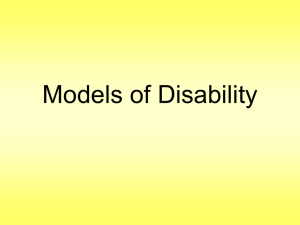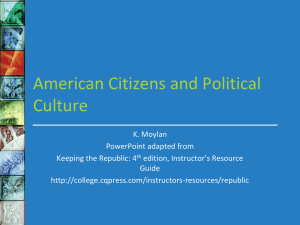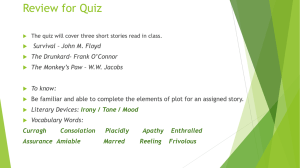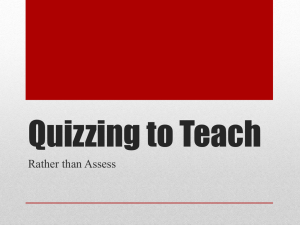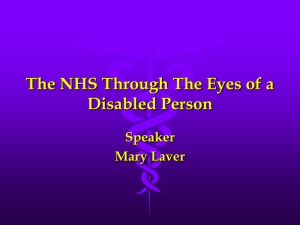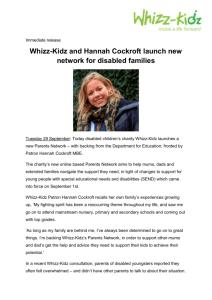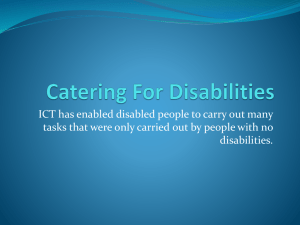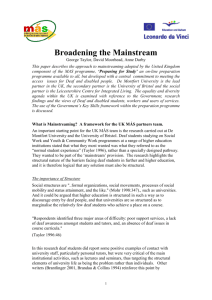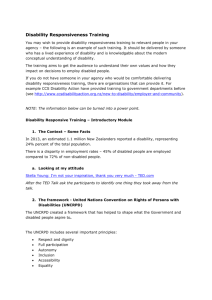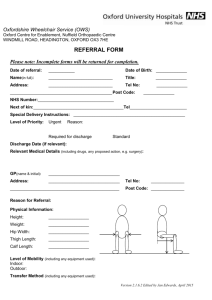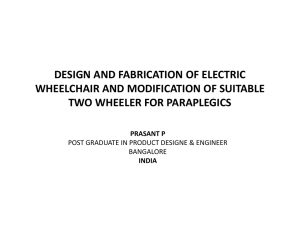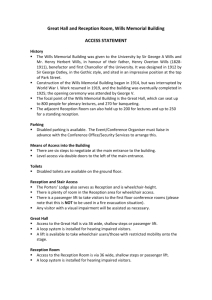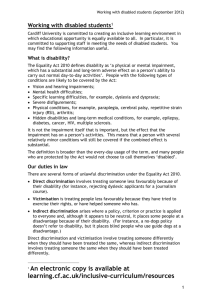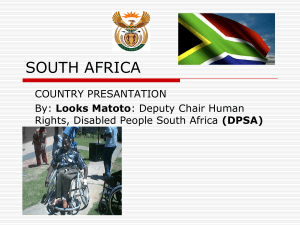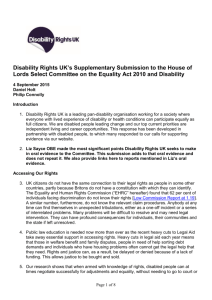Disability and Cultural Awareness
advertisement
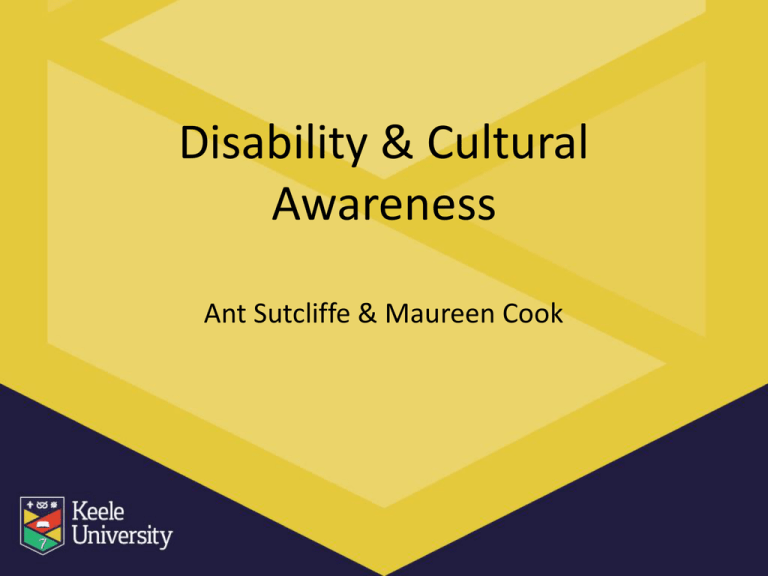
Disability & Cultural Awareness Ant Sutcliffe & Maureen Cook Core Aims & Session Plan • Multicultural Quiz – Awareness of cultures • Disability Equality Quiz – Terminology and Delivering Equality • Summary Multicultural Quiz • Listen to the question, answer on the sheet provided • Swap sheet and mark • Like that quiz proved, it is hard to understand everything about the cultures others may have come from or the customs they adhere to • We work with colleagues & young people from massively diverse backgrounds • Be aware of any religious or dietary requirements, don’t make a ‘big deal’ out of any situation when this may arise. • Be aware of terminology referring to Social Background Terminology Genuine examples of bad use of phrases • “The weather is a bit gay today” • “Them kids from that school from Chell were a bit chavvy, today, weren’t they?” • “Don’t listen to what Dave said, he is a right retard” Disability Equality Quiz • Disabled students are entitled morally and legally to fully participate in our community. The golden rule for interacting with a disabled person is the same as interacting with anyone else – treat the person with kindness, respect and as an adult. • You may have some questions about how to approach and communicate with a disabled person. This quiz may help you to make some choices about your interactions when meeting a disabled person. There may be more than one correct answer. Question One What is the most appropriate terminology for someone who is disabled? a. Person with a disability b. Disabled Person c. Person with special needs d. Differently abled person Question Two A person who is deaf is referred to as: a. Having a hearing impairment b. Someone who is hard of hearing c. d/Deaf Question Three When meeting someone who is deaf and is accompanied by an interpreter you should: a. Maintain eye contact with the person who is deaf b. Maintain eye contact with the interpreter c. Look back and forth between them Question Four When assisting a person who is blind/partially sighted you should: a. Be specific with verbal instructions and give approximate distances b. Point in the direction required c. Walk alongside and slightly ahead of the person; don’t hold on to their arm but allow them to take your arm if they want Q4 Question Five When meeting a person who is blind/partially sighted you should: a. Identify yourself and those around you b. Describe the layout of the room and where everyone is positioned c. Wait for them to introduce themselves Question Six The correct way to refer to someone who has is: a. Epileptic b. Person with epilepsy Question Six Someone in a wheelchair is called: a. Wheelchair bound b. A wheelchair user c. Person with a wheelchair Question Seven You see someone using a wheelchair or a cane who appears to be struggling. You should: a. Move on and leave them alone b. Offer to assist the person c. Assist the person without asking Question Eight When conversing with a person who uses a wheelchair you should: a. b. c. Kneel down beside them Remain standing Pull up a chair Question Nine You are conversing with a person who has trouble speaking. You are only able to understand a few words so you should: a. Avoid asking them to repeat themselves in case you offend them b. Pretend you understood and hope you have guessed correctly c. Ask the person to repeat what you have said and repeat it back to check that what you thought had been said is correct In Summary • Terminology is important because it reflects our attitudes and beliefs • Using the right word matters. It is about using the language marginalized groups and organisations that work on their behalf find acceptable and not political correctness • Think before you speak • Do not be scared to approach issues, or speak of personal experiences Thank you… Questions?



